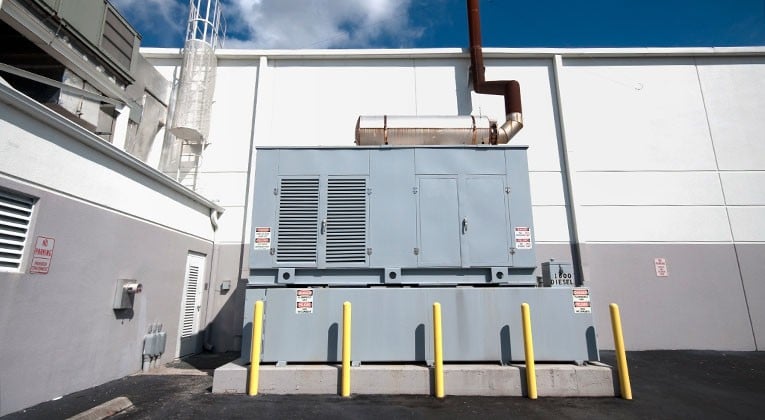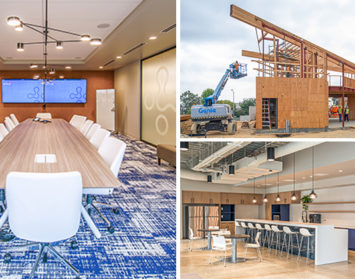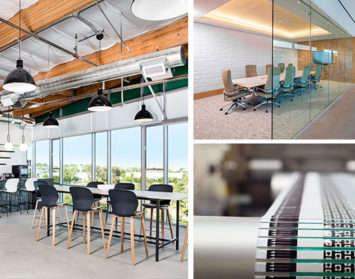Companies need electricity to operate. As a business leader, what measures do you take to protect your company’s productivity and profits in the event of a power outage? Similar to shopping for insurance policies, investing in a backup generator starts with evaluating your company’s risk exposure. So once you’ve evaluated your risk and decided to purchase and install a backup generator, it’s time to get wise about how to successfully design, permit and install a backup generator.
For the purposes of this article, we’re assuming you have signed a lease to move into a new building, and you have approval from your landlord to install a backup generator. With a 10-12 week lead-time, generators become their own mini-projects within the larger project of building out your new office space. Separating the generator permit from the rest of the project’s permit is an idea worth considering since it will decrease the risk of your project failing final inspection due to the generator installation being delayed. Without a final inspection sign-off you are not allowed to occupy your new space.
Programming and Design: Prior to ordering or procuring your generator, you need to consult with an electrical engineer and structural engineer to program and design the generator permit package, which will be submitted to your city’s building department. If you’re considering installing the generator within your building, instead of outside, then you will also need to hire a mechanical engineer. So what elements are needed for a complete design package and a successful city review? The following list of questions will help you to be prepared.
1. What equipment will need to be run on the generator in the event of a power outage?
Typically, most clients say they’ll need their server room and any rooms that generate profit to remain operational in the event of a power outage. Don’t forget about the areas or offices that will require heating, cooling and lighting to remain online. These additional items could increase the size and cost of the generator. Keep in mind, it usually isn’t practical to backup the entire building, as doing so would be expensive and also reduce the total run time (i.e, fuel supply) for the generator. Think mission critical. What can’t your business live without? As opposed to running all business operations on emergency power (E-power for short), your goal should be to efficiently distribute E-power to mission critical business operations in order to keep revenue-generating business operations online for a longer duration. Keeping this in mind will help you to appropriately size the equipment and enclosure.
2. How long will you need the generator to run in the event of a power outage?
This is truly a business decision. Is the answer one hour, six hours, 12 hours, or 24 hours? This duration is important because it helps the electrical engineer appropriately size the fuel tank. A fuel tank’s design constraints change as the tank size increases due to safety considerations, so construction costs go up with greater on-site fuel storage.
In the event of a severe local emergency, fuel trucks will be automatically routed to hospitals, fire stations, police stations, etc. Unfortunately, your business will be lower on the priority list, so counting on refueling a smaller tank to meet your run-time needs may not be a sound plan.
3. Where will the generator be located on the project site?
You typically want your generator to be as close to the main electrical room as possible in order to reduce the length of your conduit pathway and associated construction costs. You’ll also need to be cognizant of the location of your property line, as each municipality has zoning regulations on sound transmittance levels. Dave Aabram, a Senior Project Engineer with Michael Wall Engineering, Inc., adds, “75dBA is usually at the high-end of the spectrum that is allowable, but every location will vary based on the surrounding area and neighborhood. Levels as low as 55dBA could be required and are harder to achieve without adding more cost to procurement.”
Remember, the generator will be in an enclosure that is not very architecturally attractive. You will typically want it to be located in the back of the building away from public view. Also, a generator is powered by a diesel engine, which will be noisy when it is running – another reason to locate the enclosure as far away from the building entrance as possible. If the generator is within a parking structure, building codes may require the enclosure walls be fire-rated, which adds additional cost.
4. What is the size and design of the generator enclosure?
The generator enclosure size depends on the selected generator. When sizing the enclosure, there needs to be room for installation and access for serviceability. Different manufacturers have different clearance requirements. The choice of enclosure material will be largely driven by the need for sound attenuation (i.e. how loud will the generator be when operating?) as required by code (and your landlord will most likely have restrictions as to what they will and will not allow).
5. Where will the ATS be located within the building? And while we’re at it, what is an ATS?
An ATS, or automatic transfer switch, automatically turns on the backup generator in order to provide temporary electrical power to the specified equipment in the event of a power outage. Dave Aabram states, “It is common to locate the ATS within the main electric room so you are in close proximity to the utility service that will ultimately feed the ‘normal’ power side of the system. However, depending on where your generator location ends up; this may not be the most economical solution. This is where a knowledgeable design team will be an important asset in working through the right solution for you.”
6. How much downtime can you afford between the power actually going out and the standby generator being switched on?
Probably none. When the power goes out to the building there’s going to be a bit of lag time, maybe a few seconds, between the initial power outage and the ATS switching the backup generator on. Be sure to have a UPS, or Uninterrupted Power Supply (essentially a big battery), installed to bridge that lag time. You should make this a point of conversation with your electrical engineer so they understand your requirements.
7. What is the exterior conduit route from the generator to the building?
The general contractor, and electrician, will need to know if the conduit will be run above ground or underground, the conduit size, and where the conduit will enter the building. This information will need to be specified by the electrical engineer on the plans.
If you’re completing a tenant improvement project while the developer or landlord is simultaneously doing extensive site work, ask them for their site schedule and tell the developer about your generator and conduit design. There’s a chance you can save time and money on the front end by installing your generator’s conduit before the hardscape is installed.
As you can see, successfully installing a backup generator requires a substantial amount of planning during the early stages of your project, but it’s not an impossible task. Proactively communicating your schedule and budgetary goals to your construction and design teams will ensure a smooth programming, design, procurement and permitting process prior to construction and installation taking place.
Hughes Marino’s industry leading Construction Management team has unmatched expertise in every type of commercial building project from tenant improvements to ground-up build-to-suits. With decades of experience in California and beyond, our project managers, engineers and LEED APs offer practical insights for the construction management professional.










